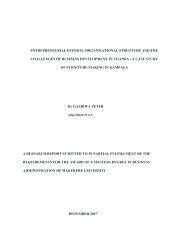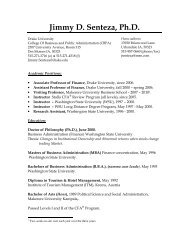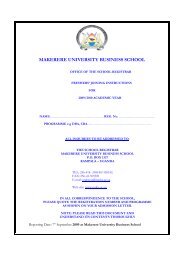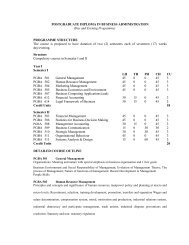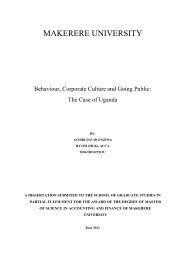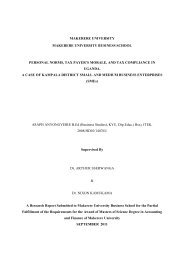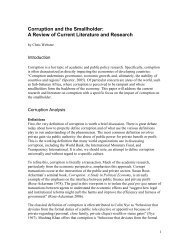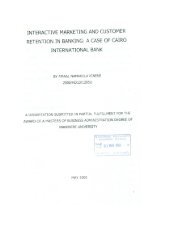13th Annual International Management Conference Proceeding
13th Annual International Management Conference Proceeding
13th Annual International Management Conference Proceeding
You also want an ePaper? Increase the reach of your titles
YUMPU automatically turns print PDFs into web optimized ePapers that Google loves.
Perceived<br />
desirability<br />
Perceived<br />
feasibility<br />
1.2 Purpose of the study<br />
To examine the relationship between perceived desirability and feasibility, cognitive and emotional<br />
characteristics, behavioral intentions, social capital and social enterprise.<br />
1.3 Objectives of the study<br />
1. To examine the relationship between perceived desirability and feasibility and cognitive and emotional<br />
characteristics<br />
2. To establish the relationship between cognitive and emotional characteristics and social capital<br />
3. To establish the relationship between social capital and social entrepreneurship behaviour.<br />
4. To examine the relationship between social entrepreneurial behaviour and formation of a social enterprise.<br />
1.4 Research questions<br />
1. What is the relationship between perceived desirability and feasibility and cognitive and emotional characteristics?<br />
2. What is the relationship between cognitive and emotional characteristics and social capital?<br />
3. What is the relationship between social capital and social entrepreneurship behaviour?<br />
4. What is the relationship between social entrepreneurial behaviour and formation of a social enterprise?<br />
1.5 Analytical Framework<br />
Emotional<br />
&Cognitive<br />
� Empathy<br />
� Moral judgment<br />
attitudes<br />
Social capital<br />
� Trust<br />
� Networks<br />
� Reciprocity<br />
The above model suggests that perceptions of desirability and perception of feasibility among individuals<br />
leads to emotional and cognitive attitudes (empathy and moral judgment) which lead to building of social<br />
capital (trust, networks) which all lead to formation of social entrepreneurial behaviour and a result a social<br />
enterprise is formed.<br />
2.0 Literature review<br />
While social entrepreneurs have existed throughout history, the concept of social entrepreneurship is<br />
relatively recent one. The term “entrepreneur” made its first appearance in the English language around 1475<br />
as “one who undertakes; a manager, controller; a champion” (OED 2003). Unlike Adam Smith, whose<br />
“invisible hand” de-emphasized the value of the entrepreneur, JB Say celebrated the entrepreneur as a value<br />
creator who shifts economic resources out of an area of lower and into an area of higher productivity and<br />
greater yield.<br />
Many facets of the social entrepreneurship process are parallel to the traditional corporate entrepreneurial<br />
process; social entrepreneurs can learn much from traditional business management practices to make for<br />
more effective and innovative social organizations (Gendron 1996).<br />
Social entrepreneurs combine innovation, opportunity and resourcefulness to transform social systems and<br />
practices in a wide variety of fields, including, for example, health, employment, education, environment,<br />
housing and technology (Prabhu, 1999).<br />
For many social entrepreneurs, charity is essentially about philanthropy, whereas social enterprise is about<br />
empowering people who are socially disadvantaged to improve their financial, social and moral status and<br />
well-being. These entrepreneurs are individuals who seize the initiative to tackle the problems affecting those<br />
60<br />
Social<br />
entrepreneurial<br />
behaviour<br />
Social enterprise<br />
(co-operative,<br />
mutual or voluntary<br />
organisation)



